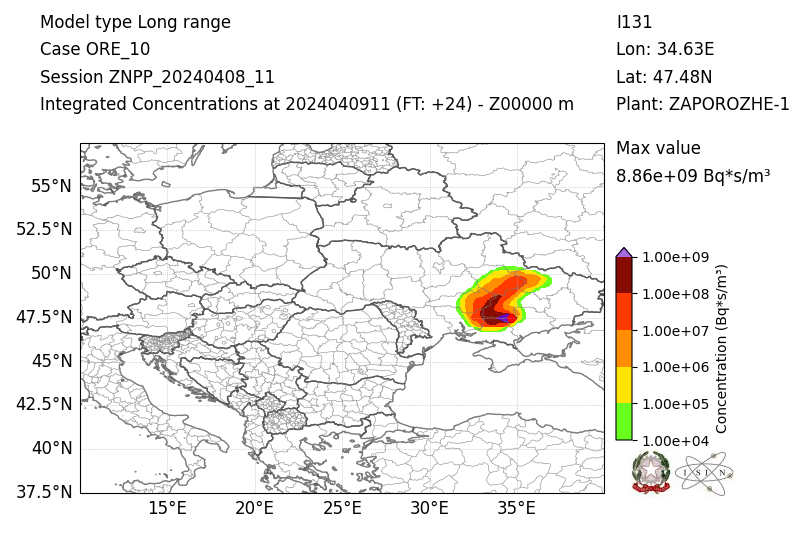Drone attack on Zaporizhzhia power plant, site security not compromised

Drone attack on Zaporizhzhia power plant, site security not compromised
A radioactive cloud released by the Zaporizhzhia plants would remain limited to Ukrainian territory, touching the border with the Russian Federation. This is what emerges from the forecast analysis tools supplied by the National Inspectorate for Nuclear Safety (ISIN), which is evaluating the evolution of hypothetical releases of radioactive substances based on the prevailing winds.
Following the drone attack on the Zaporizhzhia nuclear power plant, announced yesterday by IAEA DG Rafael Mariano Grossi, the Inspectorate, in line with its mandate, is in fact monitoring the situation at the Ukrainian site.
According to the latest simulations, conducted with the Aries system of the ISIN Emergency Center, a possible cloud of radioactivity would move, in the first 24 hours from the hypothesized release at 12 noon today, in a westward direction, investing the Ukrainian regions of Zaporizhzhia, Kherson, Mykolaiv, Odessa (partially) and Kirovohrad. Subsequently, the cloud would suddenly turn north, north-east, affecting the Ukrainian regions of Poltava, Dnipropetrovsk, Kharkiv and, very marginally, Sumy.
Regarding the safety of the Zaporizhzhia nuclear power plant, the IAEA announces that, after receiving information about the drone attacks, the Agency's experts present on site examined the physical impact of the detonations: in one of the six reactor buildings,surveillance and communications equipment were targeted and one detonation affected Unit 6 in particular.
There is currently no indication of damage to the nuclear safety of the site.
While no structural damage has so far been observed to systems, structures and components important for nuclear safety or security at the facility, IAEA experts report having identified superficial damage on the upper part of the roof of the reactor dome of the Unit 6 as well as scratches on a concrete wall that supports the primary make-up water storage tanks.
The Inspectorate is monitoring the radiological situation on the national territory 24 hours a day, also thanks to high-volume monitoring stations, capable of detecting the presence of trace radioactivity. In particular, to date the Sgonico Station (TS) which covers the north-eastern side of the national border has not detected any variation in the normal levels of environmental radioactivity
In constant contact with the Department of Civil Protection, ISIN also makes use of international emergency circuits to obtain promptly updated information.
